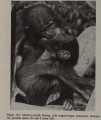23 Sep, 2024: Our collection of material documenting harassment, doxing and allegations of illegal behavior against MAPs, on the part of a purportedly "MAP" group, is now complete. A second article documenting a campaign of disinformation by said group is nearing completion, and will be shared here.
Research: Intergenerational Sexual Behaviors in Animals
 | ||||||||||||
| Part of NewgonWiki's research project | ||||||||||||
|---|---|---|---|---|---|---|---|---|---|---|---|---|
|
| ||||||||||||
| ||||||||||||
|
| ||||||||||||
| Template: Research - This template |
Intergenerational sexual activity has been documented in numerous species, particularly closely related primates. Bonobos are one example - see, nature documentaries and home movies: (1), (Backup)
While this should not be interpreted as instruction for how humans should behave, it does cast doubt upon the biological necessity of arbitrary morals-based prohibitions on age discrepant behavior.
Biological Exuberance
The following are excerpted from Biological Exuberance - Animal Homosexuality and Natural Diversity by Bruce Bagemihl.
Heterosexual
- Bonobo: "Both adult males and females interact sexually with adolescents and juveniles (three-to-nine-year-olds). In fact, young females go through a five-to-six-year period sometimes referred to as ADOLESCENT STERILITY (although no pathology is involved) during which they actively participate in heterosexual mating (often with adults) but never get pregnant. Sexual behavior between adults and infants of both sexes is common - about a third of the time it is initiated by the infant and may involve genital rubbing and full copulatory postures (including penetration of an adult female by a male infant). (Biological Exuberance - 274)
- Chimpanzee: Although incestuous matings between adults are not common, mothers engage in sexual activity with their infant son fairly often. Young females typically experience a one-to-three-year period of ADOLESCENT STERILITY after their first menstruation, during which time they mate heterosexually without conceiving. (Biological Exuberance - 278)
- Gorilla: "Both males and females also engage in masturbation, and younger animals frequently participate in nonpenetrative sexual activity. Mountings of the latter type are usually incestuous, involving siblings, half siblings, or (more rarely) parents and their offspring (or their siblings' offspring)." (Biological Exuberance - 283)
- Orangutan: "Mothers frequently engage in incestuous contact with their infants, manually or orally stimulation the penis or clitoris (or being stimulated by the infant), and may even mount the infants." (Biological Exuberance - 287)
- Gibbons (White-handed gibbon and Siamang): "In one case, a Siamang father was observed fondling his adolescent daughter's vulva with his fingers while her younger brother licked her clitoris. Mothers may invite their juvenile sons - as young as four to five years - to lick and groom their genitals (usually with no hostile reaction from the father)." (Biological Exuberance - 291)
- Langur and Nilgiri Langur (Presbytis entellus and Presbytis johnii): "Females also occasionally mount males, while adult-juvenile heterosexual interactions also occur." (Biological Exuberance - 296)
- Japanese Macaque: "Females in some troops frequently form consortships with sexually immature (preadolescent) males;..." [...] "In some troops, a unique form of "baby-sitting" has developed. Although males in this species do not typically participate in parenting, high-ranking males in some populations take care of infants that are not their own for short periods. They groom, carry, embrace, and protect the infants, usually with the consent of their mothers. [...] ,a few male caretakers interact sexually with infants (usually females), masturbating themselves while carrying them or even thrusting against them. (Biological Exuberance - 305)
- Rhesus Macaque: "In some cases, though, "aunts" engage in aggressive or sexual interactions with the infants as well and may even try to "kidnap" another female's baby." (Biological Exuberance - 310)
- Crested-Black Macaque (Macaca Nigra): "Infant and very young male Crested Blacks often mount adult females, performing pelvic thrusts and even achieving penetration. " (Biological Exuberance - 322)
- Savanna Baboon, Hamadryas Baboon: "Sexual activity in Baboons also sometimes includes copulation with partners that are not optimal for breeding: adult male Savanna Baboons and adult female Hamadryas Baboons may mate with juvenile animals, incestous matings are common in inbred troops [...]" (Biological Exuberance - 327)
- Tamarin and Marmosets: "Both male and female Lion Tamarins (Leontophitecus rosalia) sometimes mount their own offspring of both sexes, including adolescent and younger individuals. Approximately 1 percent of mounting activity in Common Marmosets (Callithrix jacchus) occurs among adolescent and younger males." (Biological Exuberance - 334)
- Dolphin: "Young dolphins are sexually precocious, and incestuous copulation have been observed between males a few months and their mothers." (p. 346) [...] "In captivity, "baby-sitting" males have been observed harassing mothers, trying to "kidnap" their calves, and even behaving sexually towards the infants "including trying to mate with them). (Biological Exuberance - 347)
- Orca: "[...] while heterosexual interactions also occur between adults and adolescents (of both sexes) and youngsters (juveniles as well as calves)." (Biological Exuberance - 351)
- Northern Elephant Seal (Mirounga angustirostris): "As noted above, some male Northern Elephant Seals routinely try to copulate with weaned pups - about half of all pups are subjected to such forced mating or rape attempts, which they usually violently resist. In some cases the pups are severely injured by the bulls, with deep gashes and punctures from neck bites. Aggressive sexual behavior by bulls is the leading cause of mortality among pups on the breeding grounds, accounting for the deaths of about 1 in 200 pups each year." (Biological Exuberance - 363)
- Northen Fur Seal (Callorhinus Ursinus): "[...] male Northern Fur Seals have also been known to attempt forcible copulations with pups of their own species." (Biological Exuberance - 369)
- White-tailed Dear (Odocoileus virginianus) and Mule or Black-Tailed Deer: "Incestuous activity - including fawns mounting their mothers - also occurs in these species." (Biological Exuberance - 381)
- Wapiti, Elk, or Red Deer and Barasingha (Cervus elaphus) or Swamp Deer (Cervus duvauceli): "Sexual behavior by calves - including adult-calf interactions - also occurs in these species. Wapiti/Red Deer calves sometimes mount adults (including their mothers, in Red Deer), while female Red Deer occasionally mount calves." (Biological Exuberance - 385)
- Caribou or Reindeer (Rangifer tarandus) and Moose (Alces Alces): "Males of booth species sometimes try to mount calves [...]" (Biological Exuberance - 389)
- Giraffe: "Giraffes engage in a few forms of nonprocreative heterosexual activity as well: younger females in heat occasionally mount male calves, while calves sometimes mount their mothers." (Biological Exuberance - 393)
- Blackbuck (Gazelle, Antilope cervicapra): "Female Blackbucks sometimes engage in nonreproductive mounts of fawns or young animals." (Biological Exuberance - 404)
- Bighorn Sheep (Ovis canadensis), Thinhorn or Dall's Sheep (Ovis dalli) and Asiatic Mouflon or Urial (Ovis orientalis): "Rams also sometimes mount lambs [...]" (Biological Exuberance - 408)
- Musk-Ox and Mountain Goat: "Even during breeding years, some heterosexual courtship activity in both Muskoxen and Mountain Goats may be directed by males toward nonprocreating individuals such as yearlings and calves. [...] Females in this species have been observed mounting adult males and courting, mounting, or being mounted by their own yearlings or kids." (Biological Exuberance - 412)
- Plains Zebra (Equus quagga) and Takhi or Przewalski's horse (Equus przewalskii): "In addition, male Plains Zebras often try to mate with unrelated juvenile females that are not yet sexually mature. In fact, stallions - alone or in groups of up to 18 at a time - may "abduct" adolescent females by separating and chasing them from their family groups, after which they will try to copulate with the young mares. Interestingly, the female shows the behavioral signs of being "in heat" before she reaches the age when she can actually conceive; usually an "abducted" mare returns to her family group after her period of "heat" is finished. [...] Although Takhi males are not as involved in parenting as mares, a stallion may act as a "surrogate mother" to his own foal if it has lost its mother, even allowing the foal to "suckle" on his penis sheath." (Biological Exuberance - 420)
- Llama: "Adult males occasionally copulate with yearling females, who are probably not old enough to breed." (Biological Exuberance - 426)
- Elephant (Afrikanska and Asiatiska): "In addition, males sometimes try to mount juvenile animals, who squeal in protest until a female intervenes." (Biological Exuberance - 430)
- Laughing Hyena: "Some males, unable to copulate, engage in a form of "masturbation" in which they thrust their penis in the air and spontaneously ejaculate; others have been seen mounting cubs." (Biological Exuberance - 447)
- Rufous Bettong or Rat Kangaroo (Aepyprymnus rufescens): "For example, adult males generally make more sexual approaches to juvenile females than to sexually adult females." (Biological Exuberance - 454)
- Fat-Tailed Dunnart (Sminthopsis Crassicadudata): "Adult male Fat-Tailed Dunnarts sometimes display sexual interest in juvenile females, and incestuous matings have also been recorded." (Biological Exuberance - 459)
- Red Squirrel (Tamaiasciuris hudsonicus) and Gray Squirrel (Sciurus carolinensis): "Juveniles, of both species often participate in mounting or sexual chases, for example, including incestuous activity between siblings or mothers being mounted by their offspring." (Biological Exuberance - 463)
- Hoary Marmot (Marmot caligata): "Sexual activity also occurs among juveniles, including mounting of adults." (Biological Exuberance - 466)
- Dwarf Cavy (Microcavia australis), Cui (Galea musteloides) and Aperea (Cavia aperea): "As mentioned above, sexual behavior between adults and juveniles is widespread in these species. About a quarter of all courtship and sexual interactions in Dwarf Cavies involve adult males and juveniles, while adult male Cuis also chin-rump follow juvenile females as young as two weeks old. In addition, juvenile Cuis of both sexes sometimes mount both adult males and females, including their own mothers. [...] Adult males in two other species of Cavies, the Mocó or Rock Cavy (Kerodon Rupestris) and the Préa (Galea Spixii), also sometimes court juvenile males, and youngsters mount adults of both sexes as well." (Biological Exuberance - 469)
- European Shag (Phalacrocorax Aristotelis): "In a few cases, adult male Shags have been observed mating with their own chicks [...]" (Biological Exuberance - 507)
- Tasmanian Native Hen (tribonyx mortierii): "[...] about 10 percent of copulation involve parents mounting their own offspring, including young chicks." (Biological Exuberance - 521)
- Ring-Billed Gull (Larus delawarensis) and Common or Mew Gull (Larus canus): "[...] and about 5 percent of adults court and mount chicks. Most of this activity involves females behaving incestuously with their own offspring, including full copulatory REVERSE MOUNTS of young birds. Mounted chicks may be as young as two weeks old, and they usually collapse under the weight of the adult mounting them and cry out in distress. Some individuals appear to be "habitual molesters" in that they repeatedly interact sexually with chicks, including their own." (Biological Exuberance - 547)
- Herring Gull (Larus Arentatus): "Several forms of heterosexual family abuse and adult-juvenile violence have also been documented in Herring Gulls. Males sometimes incestuously mount their own chicks and have even been seen breaking and eating their own eggs." (Biological Exuberance - 555)
- Black-Headed Gull (Larus Ridibundus): "In addition, males occasionally try to mate with chicks (including their own), who may be only a few days old; juveniles also mount each other)." (Biological Exuberance - 559)
Homosexual
- "And in the majority of cases, male and female homosexualities present their own unique blends of behaviors and characteristics that defy any simplistic categorization - such as Bonobos, where sexual penetration occurs in female rather than male same-sex activity, where sexual interactions between adults and adolescents are a prominent feature of female interactions, and where males do not form strongly bonded relationships with each other the way females do, but engage in less homosexual activity overall and more affectionate activity such as openmouthed kissing." (Biological Exuberance - 30)
- Bonobo: "GG-rubbing occurs among females of all ages, from adolescent to very old, but if an older and a younger female are interacting, often the younger female will be on top. (p. 271) [...] In addition, when new females (usually adolescents) join a troop, they often pair up with an older female with whom they have most of their sexual and affectionate interactions. These bond need not be exclusive - either party may have sex with other females or males - but such mentorlike pairings can last for a year or more until the newcomer is fully integrated into the troop. [...] Manual stimulation of the genitals by a partner also occurs: typically an adolescent male spreads his legs and presents his erect penis to an adult male, who takes the shaft in his hand and caresses it with up-and-down movements." (Biological Exuberance - 273)
- Gorilla: "There is often intense competition among the males for "preferred" partners - often the younger males - and older, higher ranking males frequently "guard" their favorite males and fight to protect them from the advances of other males." (Biological Exuberance - 281)
- White-Handed Gibbon (Hylobates lar) and Siamang (Hylobates syndactylus): "Within their nuclear family groups, male Gibbons sometimes engage in homosexual activities with each other. This incestuous activity often takes place between adolescent or younger male and his father (or stepfather, if his parents have divorced and re-paired); in Siamangs it may also occur between brothers." (Biological Exuberance - 289)
- Hanuman Langur (Presbytis entellus) and Nilgiri Langur (Presbytis Langur): "All females participate freely in homosexual mounting, including lactating, pregnant, menstruating, ovulating, and nonovulating females. This behavior is especially common among mothers, who have developed a special "baby-sitting" system: they transfer their young to other individuals in the troop (usually other females but sometimes males) for a short time (a similar pattern is found in Nilgiri Langurs). This allows them to engage in homosexual (and other) activites. Most mounting between females occurs among adults, through some involves adults with juveniles (up to four years old), usually with the younger female mounting the older one. Altough most homosexual participants are unrelated, some mountings are incestous, mostly between half sisters (about 27 percent of all lesbian mounts) and more rarely, between mother and daughter (about 1 percent of mounts); heterosexual matings are virtually never incestuous." (Biological Exuberance - 294-295)
- Japanese Macaque (Macaca fuscata): "Homosexual pairings occur among females of all ages, from adolescents to the very old, and sometimes an adult female will pair with a pubescent female. Interestingly, an incest taboo is in effect for homosexual but not heterosexual courtships: females never choose close relatives (mothers, sisters, daughters, granddaugthers, first cousins) as partners, whereas brother-sister and mother-son consorts do occasionally occur. Aunts and nieces, however, do not generally recognize each other as kin in this species, and so they sometimes consort together." (Biological Exuberance - 303)
- Crab-Eating Macaque (Macata fascicularis): "Males can also develop intense sexual relationships with one another, especially between older and younger males. In one such pair observed in captivity, affectionate embraces frequently led to sexual arousal and homosexual mounting, often accompanied by excited lip-smacking or crooning sounds; the male being mounted sometimes even turned his head to kiss his partner during a mount." (Biological Exuberance - 317)
- Pig Tailed Macaque (Macaca nemestrina): "Some same-sex mountings is incestuous, e.g., between mother and daughter or siblings of either sex." (Biological Exuberance - 321)
- Crested Black Macaque (Macaca nigra): "Younger males often mount older ones in this species." (Biological Exuberance - 321)
- "Baboon" (other species): "Among the Patas Monkeys (Erythrocebus patas), adolescent and younger males often fondle and nuzzles the scrotum and genitals of adult males." (Biological Exuberance - 328)
- (Common) Squirrel Monkey (Saimiri sciureus): "Homosexual mounting sometimes occurs between male Squirrel Monkeys, especially younger individuals or between an older and younger (adult) partner; adult males also perform the genital display to each other." (Biological Exuberance - 332)
- Lion Tamarins (Leontopithecus rosalia) and White-fronted Capuchin Monkeys (Cebus Albifrons): "Both male and female Lion Tamarins (Leontopithecus rosalia) sometimes mount their own offspring of both sexes, including adolescents and younger individuals. Approximately 1 percent of mounting activity in Common Mamosets (Callithrix Jacchus) occurs among adolescent and younger males (brother living in the same family group). In White-fronted Capuchin Monkeys (Cebus Albifrons), young males occasionally suck and fondle the scrotum of older males, while homosexual activity among females (including mounting) also occurs in Brown Capuchins (C. apella) and Weeper Capuchins (C. olivaceous)." (Biological Exuberance - 334)
- Verreaux's Sifaka (Propithecus Verreauxi): "Male Verreaux's Sifakas sometimes mount other males during the mating season. The mounted animal - usually a younger adult or adolescent male - often snaps at the mounter and tries to wriggle free (as do females trying to escape from unwelcome heterosexual advances)." (Biological Exuberance - 336)
- Bottlenose Dolphin (Tursiops truncatus) and Spinner Dolphin (Stenella lingirostris): "If there is an age difference between male partners, either may penetrate the other, and Bottlenose adolescents have even been observed penetrating much older males." (Biological Exuberance - 343)
- Orca (Orcinus orca): "Altough males of all ages participate in homosexual activities, this behaviour is most prevalent among "adolescent" Orcas (sexually mature individuals 12-25 years old) More than three quarters of all sessions involve males who are more than five years apart in age, altough age-mates also interact together (especially among adolescents)." (Biological Exuberance - 350)
- Gray Seal (Halichoerus grypus) and Northern Elephant Seal (Mirounga angustirostris): "Those males who have completed their molt often roll around in pairs near the water and mount each other; bulls of all ages participate in this activity. Both adolescent and younger adult Northern Elephant Seal bulls also engage in homosexual mounting during the molt period. This occurs in shallow waters near the shore, often as part of extended bouts of harmless playfighting among clusters of males. [...] Adult males do not participate in this activity. However, they do sometimes mount younger adolescent and juvenile males (two to four years old). Typically the older male approaches the younger male at rest, moving up alongside him and sometimes placing his front flipper over his back in the position characteristic of heterosexual copulations. Usually the younger male struggles to escape, and the mounter may try to subdue him by pressing or bouncing his neck down on top of him or biting his neck. The older male may have an erection and attempt to penetrate the younger male, but he rarely succeeds. Altough they prefer juveniles or adolescents, a few bulls also try to copulate with much younger animals, such as weaned pups of both sexes (who strongly resist their advances)." (Biological Exuberance - 361)
- Australian Sea Lion (Neophoca cinerea) and New zealand Sea Lion (Phocarctos hookeri): "All age groups participate, altough there is often an age difference between the two males, with the younger male typically mounting the older one (especially in New Zealand Sea Lions)." (Biological Exuberance - 367 - 368)
- Walrus (Odobenus Rosmarus): "Typically a younger male displays to an older one, and courting males often situate themselves in the water near a favorite cliff face, boulder, or rock formation at the water's edge. The spectacular display consists of inflation of the throat pouches - often preceded by head bowing - interspersed with dives by one or both males, and an incredible series of vocalizations that form a courtship "song". (p. 371) [...] Although most homosexual behaviour is confined to the summer haul-outs, younger males sometimes also mount adults or other younger males during the breeding season. Groups of younger Walruses may crowd around an older male and roll on top of him; in addition, an adult male occasionally sings his courtship songs to a group of younger males or is accompanied by a younger attendant male while he sings. Often, his companion surfaces and dives in synchrony with him. This behavior, known as SHADOWING, occurs regardless of whether the adult is courting a female. [...] During breeding season, up to a third of mounting activity may take place between younger males or between adult and younger males, and 2-19 percent of singing males have a younger male companion "shadowing" them." (Biological Exuberance - 372)
- White-Tailed Deer (Odocoileus virginianus): "Adult male White-tailed Deer sometimes mount each other, as do yearling males (especially during the nonbreeding season); occasionally a younger male mounts an older one during this activity." (Biological Exuberance - 379)
- Wapiti, Elk, or Red Deer (Cervus elaphus) and Barasingha or Swamp Deer (Cervus duvauceli): "Usually the two animals engaging in same-sex activity are fully grown adults, but in male Wapiti homosexual mounting may occur between adult bulls and spikehorns (yearlings whose antlers are spikes, having yet to develop prongs). Red Deer yearlings also participate in same-sex activity including occasional incestuous homosexual mountings by females of their mothers." (Biological Exuberance - 383 - 384)
- Caribou or Reindeer (Rangifer tarandus) and Moose (Alces alces): "Caribou sometimes mount each other, as do younger males, while yearling Moose have been observed trying to mount adult bulls. In addition, bull Moose sometimes associate with younger male companions." (Biological Exuberance - 388)
- Pronghorn (Antilocapra americana): "Males of all age groups participate in homosexual courtship and mounting, although adult males usually direct their attentions to adolescent males. Mounting between males sometimes occurs during sparring or play-fighting as well." (Biological Exuberance - 394)
- Bighorn Sheep (Ovis canadensis) and Thinhorn or Dall's Sheep (Ovis dalli): "Typically an older, higher ranking male will court a male younger than him, using a sequence of stylized movements." (Biological Exuberance - 406)
- Mountain Goat (Oreamnos americanus): "Adult male Mountain Goats court younger (yearling) males, again using the species typical heterosexual behavior patterns: the courting male approaches the other in a crouching position, creeping on his stomach with his head stretched forward (a posture referred to as the LOW-STRETCH). He may also flick his tongue in and out of his mouth while making soft bussing sound, jerk his head sideways, and attempt to lick the other male's flanks. Typically the yearling male responds aggressively to the courting adult. Adult males occasionally perform this display toward other adults as well. In addition, yearling females sometimes mount their own mothers. [...] In contrast, yearling Mountain Goats that are courted by older males are primarily heterosexuals, since they reject most same-sex advances." (Biological Exuberance - 411)
- African Elephant (Loxodonta africana) and Asiatic Elephant (Elephas maximas): "Homosexual mating lasts about the same lenght as heterosexual mating, generally less than a minute, altough one male may mount another several times in succession. Both older bulls and younger males participate in this activity. [...] Male Elephants also form "companionships" usually composed of an older bull and an attendant younger male (in contrast, there are no long-lasting heterosexual bonds in these species). In African Elephants, the younger male often helps the older one by guarding him or pulling down branches for him; in other cases, the older bull may help a younger male (or vice versa) who is injured or suffering from blindness of paralysis. The two males are constant companions and generally isolated from other Elephants; occasionally, an older bull will have two attendants. Among Asiatic Elephants, such male companionships appear not to be as long-lasting as in African Elephants. Younger attendant males in African Elephants are sometimes reported to have enlarged genitalia." (Biological Exuberance - 428 -429)
- Spotted Hyena (Crocuta crocuta): "Homosexual mounting between females also occur in this species; in some cases an adolescent or younger adult mounts an older one." (Biological Exuberance - 446)
- Rufous Bettongs or Rat Kangaroo (Aepyprymnus rufescens): "Some homosexual interactions in Rufous Bettongs involve adult females courting and mounting juvenile females and vice versa." (Biological Exuberance - 454)
- Gray Squirell (Sciurus carolinensis): "Gray Squirells are sequentially or chronologically bisexual: juveniles, adolescents, and young adults (up to one and a half years old) show a preference for homosexual activity, while older adults generally exhibit much less same-sex mountings." (Biological Exuberance - 463)
- Dwarf Cavy (Microcavia australis), Cui or Yellow-Toothed Cavy (Galea musteloides) and Aperea or Wild Cavy (Cavia Aperea): "In Dwarf Cavies, adult males are sexually attracted to juveniles of both sexes. A typical homosexual courtship begins with the adult and the younger male sitting quietly together - often right in front of the youngster's mother, who is not visibly disturbed. The two males may kiss and nuzzle their noses together, after which the adult begins to gently nibble on the juvenile's rump. This is often followed by a courtship behavior known as CHIN-RUMP FOLLOWING, in which the adult male places his chin on the youngster's rump, as they move together in circles or figure-eight patterns. If the male is especially aroused, he will stop to pat his paws against the juvenile's rump, sometimes even licking, sniffing, and nuzzling the anus and perineal region while lifting up the youngster's hindquarters with his nose. Adult males frequently have favorite males that they prefer to court and interact sexually with, actively seeking them out while ignoring others. (p. 467) [...] Adult male Apereas sometimes court younger males by RUMPING, in which the adult throws one or both hind legs over the rump of the youngsters. [...] Adult males occasionally also have an adolescent companion; the two males sit and feed together, as well as kiss one another. Sometimes the adult male will permit his companion to mount a female that he is courting. (p. 468) [...] Adult males in two other species of Cavies, the Mocó or Rock Cavy (Kerodon rupestris) and the Preá (Galea spixii), also sometimes court juvenile males, and youngsters mount adults of both sexes as well." (Biological Exuberance - 469)
- Ring-Billed Gull (Larus delawarensis): "For example, one or both partners in a homosexual pair are often younger females: couples in which there is an age difference between the two females - one an adult, the other an adolescent or younger adult - are particularly common in some populations." (Biological Exuberance - 545)
- Guianan Cock-of-the-rock (Rupicola rupicola): "Homosexual activity between adult and adolescent males, as well as among adolescent males, is a routine occurence in Guianan Cock-of-the-Rock. Males court and display to each other, as well as engage in homosexual mounting. (p. 567) [...] If an adolescent male approaches an adult who is courting a female, the female usally leaves (or is chased away), and the two males turn their attentions to each other." (Biological Exuberance - 568)
- Swallow-Tailed Manakin (Chiroxiphia caudata): "Male Swallow-tailed Manakins perform an elaborate group courtship ritual, the JUMP DISPLAY. Sometimes this display is directed toward females, sometimes toward yearling or younger adult males (the latter resembling females in their green plumage, but distinct because of their red-orange caps), and less commonly toward another adult male." (Biological Exuberance - 572)
- Bicolored Antbird (Gymnopithys bicolor) and Ocellated Antbird (Phaenostictus mcleannani): "Homosexual pair-bonds are sometimes long-lasting associations, persisting for many years. Partners may both be adults, or an older bird may pair with a younger one. In Ocellated Antbirds, father-son courtship-feedings also sometimes occur when a younger male remains within the clan structure." (Biological Exuberance - 576)
Other sources
- Green, Richard (2002). "Is pedophilia a mental disorder?", Archives of Sexual Behavior, 31 (6), 467-471. Citing: De Waal, F. (1990). "Sociosexual behavior used for tension regulation in all age and sex combinations among Bonobos." In J. Feierman (Ed.), Pedophilia: Biosocial Dimensions (Jay R. Feierman, ed, pp. 379–393).
- "Observations concern a near relative of Man, the bonobo, where these “pigmy chimps” are allowed free access to any other bonobo for sexual contact at the San Diego Zoo. Nonfertile combinations (same-sex or juvenile–adult combinations) were as frequent as potentially fertile, adult male–female combinations. Further, one third of sociosexual contacts by an adult with an infant were initiated by the infant (De Waal, 1990)."
- Steven Angelides (2004) Feminism, Child Sexual Abuse, and the Erasure of Child Sexuality GLQ: A Journal of Lesbian and Gay Studies, Volume 10, Number 2, pp. 141-177 ; a copy on webarchive
- "They were often justified as well by cross-species comparisons, which emphasized the naturalness of adult-child sex in other mammals. In Sex Offenders Paul H. Gebhard et al. claimed that "sexual activity between adult and immature animals is common and appears to be biologically normal." Indeed, it "is precisely what we see in various animals, particularly monkeys." This fact lessened "the horror with which society views the adult who has sexual relations with young children."21 As Robert S. De Ropp summed up, in a more matter-of-fact articulation of the underlying masculinist assumptions: "The craving of the elderly male for the young female is not necessarily confined to the human species. Old stags are always after little ones and the young does are always willing."22 [...] 21. Paul H. Gebhard et al., Sex Offenders: An Analysis of Types (New York: Harper and Row, 1965), 54, 276, 54. 22. Robert S. De Ropp, Sex Energy: The Sexual Force in Man and Animals (New York: Delacorte, 1969), 111-12."
- deMause, Lloyd (2002). The Emotional Life of Nations, chapter 8.
- "Primate mothers are widely reported as copulating with their children; indeed, many cannot learn to reproduce unless they have had sex with adults when they were children. Many immature primates "copulate with their mothers...explore adult genitalia and experience manipulation of their own." Our closest ancestors, the bonobo chimps-termed "the erotic champions" of primates-spend much of their time sucking and masturbating the genitals and "genitogenital rubbing" of both male and female juveniles, "to reduce tensions." Primate children are regularly observed being taught to thrust against their mothers' genitals. This "sexualization of the infant" was likely extended when human infants grew much larger heads, since it meant in order to get through the narrow birth canal before the head grew too large human infants had to be "born fetal," extremely immature and increasingly helpless, so that in early humans "maternal attention was not sufficient to care for more helpless infants..."This in turn meant a selection for those babies who could most satisfy the mother's erotic needs-for instance through the extension of non-hairy, erotic skin areas-for they would be best nursed and cared for as an erotic, tension-reducing object. Likewise, those human mothers were selected who had evolved the largest and most erotic breasts and who had genitals shifted around to the front, where they could rub them against their children."
- Rind, B., Bauserman, R. and Tromovitch, P. (2000). Science versus orthodoxy: Anatomy of the congressional condemnation of a scientific article and reflections on remedies for future ideological attacks, chapter 8.
- "Ford and Beach (1951), in their seminal review of cross-cultural and cross-species data, observed that "[a]s long as the adult members of a society permit them to do so, immature males and females engage in practically every type of sexual behavior found in grown men and women" (p, 197) They also observed that juvenile sexual activity in monkeys and apes is "no less natural for the young primate than are the chasing, wrestling, and mock fighting that consume so much of his waking life" (p. 255). Psychologists have all but ignored these perspectives in favor of fitting their descriptions and explanations of juvenile sexuality to current Western values."
- Rind, Bruce (2009). "Social Response to Age-Gap Sex Involving Minors: Empirical, Historical, Cross-Cultural, and Cross-Species Considerations." Paper presented at the "Good sex, bad sex: Sex law, crime and ethics" conference in Budapest, Hungary, May 4 to 6, 2009.
- "If age-gap sex involving non-adults is, by nature, as disturbing as most contemporary authorities believe it is, then should we not see evidence for this elsewhere in nature—for example, in our close primate relatives? Age-gap sex in primates is commonplace but shows no evidence of the trauma many think is so intrinsic to these contacts.
- Bonobos and chimpanzees are our closest animal relatives. Immature males in these two species are highly sexual, much more than immature females. They behave sexually with other immatures and with adults of both sexes, but prefer mature females, with whom they often attempt to initiate sex. In most cases, they show sexual arousal, with erections. The mature females are quite tolerant of the young males and usually allow them to attempt copulation. When immature male chimps are rebuffed by mature females, they typically whimper and throw tantrums. Researchers have concluded that male chimps in early puberty actually need copulatory practice with older females, else their adult copulating behavior will be inept.
- In bonobos, when a female reaches adolescence, she transfers into a new group, where she pairs up with one adult female in particular, who acts as her “mentor.” This relationship, which is sexually based and lasts about a year, helps the adolescent female integrate into the new group and eventually be accepted by all the other females.
- Age-gap homosexual relations among males are also quite common in apes and Old World monkeys. Pederasty in gorillas, for example, is pervasive. In this species, while one male dominates a group of females in a harem, the remaining males form an all-male group for many years at a time, in which courtship and copulation occur on a daily basis between adult and adolescent males. Several researchers directly observing this behavior have concluded that it serves to maintain group cohesiveness. In rhesus macaques, sexual relations between mature and immature males are frequent. They often occur despite the presence of receptive females. Young males tend to welcome these contacts and may even compete for older males’ attentions. The relations can be highly affectionate and appear to be functional for the immature males’ development of sexual and gregarious behaviors. Similarly affectionate age-gap male homosexual relations have been observed in various other species, such as orangutans, Hanuman langurs, and stumptail macaques. Among Tibetan macaques, oral-genital contact between adult and juvenile males occurs on a regular basis. Sometimes the younger partner jumps onto the adult’s face to initiate it; other times the adult begins the contact by turning the juvenile upside down. Both younger and older participants generally seem excited. These behaviors are never aggressive and appear to reduce tension between the them. Similar age-gap relations occur daily and universally in Mona monkeys; the sexual interactions are almost never aggressive and appear to help the younger males integrate into the male group and to maintain group cohesion.
- When it comes to human age-gap sexual relations, the stereotype is that they are, by nature, aggressive encounters, where the older person imposes his will on an unwilling younger partner, who is traumatized and psychologically ruined. It is striking, then, that we find just the opposite in the primate data, where researchers document that eagerness and even initiative on the part of the younger animal are commonplace,26 and they repeatedly describe positive developmental and social functions that these relations appear to serve—just as historians and anthropologists also have also done with regard to other times and cultures."
- Rind, Bruce (2024). "[https://www.researchgate.net/publication/383699408_Same-Sex_Sexual_Behavior_Age-Class_and_Coalitions_in_Male_Rhesus_Macaques_Macaca_mulatta Same‑Sex Sexual Behavior, Age‑Class, andCoalitions inMale Rhesus
Macaques]. Archives of Sexual Behavior. 1-20. 10.1007/s10508-024-02983-6."
- "In the present study, relations between same-sex sexual behavior (SSB), age-class, and coalitional behavior in male rhesus macaques were examined in a re-analysis of data first analyzed and reported by Clive etal. (2023). [...] Most dyads contained at least one non-adult (76%). Young and prime adult mounters most often selected non-adults to mount. Mounters were often sexually motivated: most for adolescents (72%); equally for juveniles (57%) and adults (56%). Finally, the highest rate of SSB with coalitional context appeared in adolescent–adult dyads involved in multiple repeated mounts. SSB, age-class, special friendships, bonding, and coalitions were linked, as reported in some other primate species and human societies cross-culturally. Employing age-class in male SSB analysis improved description and explanation."
Excerpt Graphic Library
The EGL on Broader Perspectives has some relevant information. Just right click/save and reproduce by uploading in short-form media to bypass character limits.
-
Janssen on Traditional Hawaii
-
Janssen (notes and sources) on Hippie Communes
-
Berger on Hippie Communes
-
More from Berger on communes
-
Don't Sleep, There Are Snakes: Life and Language in the Amazonian Jungle, by Daniel Everett.
-
Jose Nieto (2004): Children and adolescents as sexual beings: cross-cultural perspectives (chilling effect on Anthropology)
-
Some interesting historical perspectives: US and UK
-
Mark Smith, Ros Burnett on a controversial British Special Girls School
-
Wikipedia on Greek Pederasty Institution
-
Sex Atlas on cathartic Adult-Child sex play
-
Data on first marriage in prewestern societies (from the Binford Dataset)
-
RV Curve
-
Ramey's SIECUS Report - Incest and intrinsic harm
-
Inciardi on child prostitutes
-
Mirkin on CP Industry
-
Levine on CP Industry
-
Richard Green: Interactions seen as beneficial
-
Religious Laws/Norms - Judaeo Christian
-
Rind continued
-
Rind on historical pederasty (cont'd)
-
Rind on historical pederasty (cont'd)
-
Rind on historical pederasty (cont'd)
-
Rind on historical pederasty (cont'd)
-
Rind on historical pederasty (cont'd)
-
Rind on historical pederasty (cont'd)
-
Rind combined in 1 image
-
Various excerpts on the Marquesas Islands
-
More from Suggs on the Marquesas Islands
-
Ford and Beach on cross-species/cultural data
-
Rind's summary on pederasty in animals[1]
-
One example from Bagemihl: Dolphins
-
Macaque age-gap sex play
-
Examples from Pedophilia: Biosocial Dimensions (Jay R. Feierman, ed.). New York: Springer-Verlag Publishers
-
Further from the above
-
Monkeys - direct screencap
-
Bonobo apes
External links
- Male Homosexual Behavior in a Free-Ranging All-Male Group of Japanese Macaques at Minoo, Japan - Jean-Baptiste Leca et al.
- Intra- and inter-group interactions of an all-male group of virunga mountain gorillas - Juichi Yamagiwa.

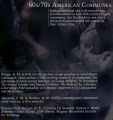

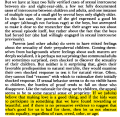

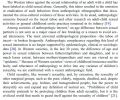




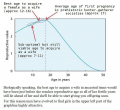




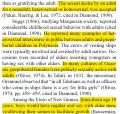

![Rind on historical pederasty throughout the world[1]](/wiki/images/thumb/Historical-Cultural-PederastyRind.jpg/120px-Historical-Cultural-PederastyRind.jpg)












